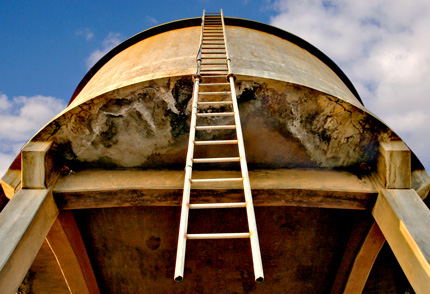Around 700 homes and businesses in Sydney’s northern beaches remained without water for hours on the 20th February, 2014 after a water main burst in Allambie Heights. Many had to wait for more than seven hours for their water supply to be restored. The affected areas included Allambie Heights, Allambie, Manly Vale, North Manly, Balgowlah, Queenscliff and Fairlight.
Some areas experienced very low water pressure. There were also road closures and traffic disruptions due to this incident.
Sydney Water provided tankers of water to essential operations like the Manly Hospital, Bear Cottage (children’s hospice) and the Stocklands Mall.
Businesses hit
Many of our local businesses experienced trade loss on the morning of the 20th. This included restaurants and cafes and others that needed water for their kitchens and toilets. Several other operations like a chimney demolition scheduled for the day were also delayed because of lack of water for dust suppression.
A timely reminder
This incident serves as a timely reminder for all of us to store enough water for an emergency. Most of us in cities and nearby suburbs depend solely on the tap water supply and do not have an alternate water source like rivers, ponds, lakes or streams. If such an emergency occurs, and we are not prepared, we could find ourselves without water for an extended period.
Here are some tips from our JEDI Plumbing team to help you be prepared in case of an emergency:
- If you have been warned that the water supply will be shut off for a few hours due to any maintenance work, make sure you store enough water in bottles, jugs and other vessels for drinking and cooking. Filling up the bath tub is also a good idea so that you can have water for flushing.
- Buy commercial bottled water from retailers which you can keep unopened for a safe and reliable supply of water during an emergency. Bottled water has a ‘use by’ date which you should monitor and replace as needed.
- You can also buy water storage containers from camping stores and use them to store tap water. Another option is reusing soft drink or packaged water bottles. Choose large 2L bottles, clean them thoroughly with detergent and water. Rinse them completely to avoid any soap residue.
Fill up the bottles with cold tap water and close the lid tightly making sure not to touch the insides of the cap with your fingers. Label the bottles with the date and store them in a cool, dark place. Remember to replace the water every six months.
- Do not use milk containers or juice bottles for water storage as the milk proteins and fruit sugars are difficult to remove completely even with thorough rinsing. These containers are conducive to bacterial growth and water should not be stored in them for a long time.
- In an extreme situation, you can even use the water from within the pipes and your hot water tank for drinking. Turn on the highest tap in your property (usually an upstairs bathroom) so that air enters your pipes and get water from the lowest tap.
- If you have access to outdoor water sources like streams or ponds, it is best to use your stored water only for drinking and use water from these sources for non-drinking purposes.
In an urban location, it is very unlikely that you will be without water for days, but it is always better to be prepared than to be caught unawares. Installing a rain water tank is also a good idea not only for such emergencies, but also to reduce your water bill and help water your garden during water restrictions.
If you are a resident of Sydney’s north shore or northern beaches, our team at JEDI Plumbing can help you with all home plumbing works including rainwater tank installation.
For a no obligation quote, we welcome your call on 0411 774 381.


